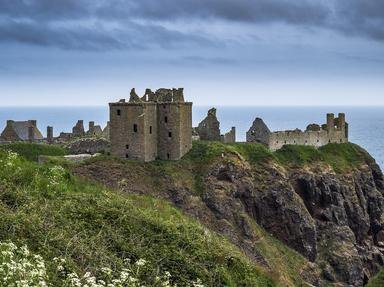Quiz Answer Key and Fun Facts
1. Fort William is the second-largest town in the Scottish Highlands and a popular tourist destination for hikers and climbers thanks to its proximity to which famous feature of Scotland's landscape?
2. The section of the West Highland Line railway from Fort William to the fishing port of Mallaig includes a fantastic viaduct across the valley at the top of Loch Shiel that has become famous thanks to its appearance in several 'Harry Potter' movies. What is it called?
3. The Isle of Mull is one of Scotland's largest islands, but most of its population live in a village noted for the brightly painted buildings that line its harbourside. Can you name it?
4. The small island of Iona, off the south-western point of the Isle of Mull, is famous for what?
5. Which famous glen in the Scottish Highlands is associated with the massacre of Clan MacDonald by government soldiers in 1692?
6. Which Scottish island would you need to visit in order to see Fingal's Cave and its distinctive hexagonal basalt rocks?
7. Lunga, the largest island of the Treshnish Isles, is a haven for wildlife and particularly noted for its colony of which popular seabirds?
8. McCaig's Tower, located on a hill above the Scottish town of Oban, was built in the late 19th century in the style of which much older construction?
9. The Clachan Bridge, which links the island of Seil to the Scottish mainland, is also known by what other name?
10. Straddling the Highland Boundary Fault, what is the name of Scotland's largest loch by surface area?
Source: Author
Fifiona81
This quiz was reviewed by FunTrivia editor
spanishliz before going online.
Any errors found in FunTrivia content are routinely corrected through our feedback system.
